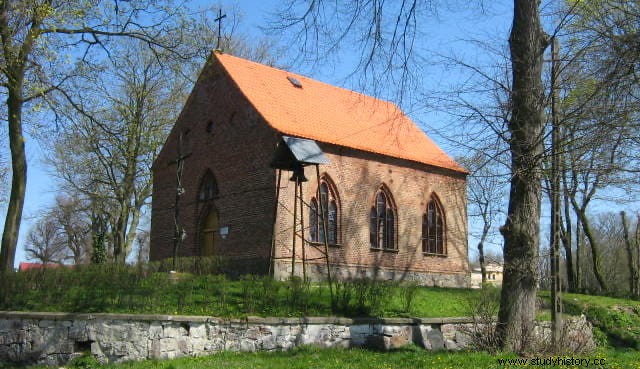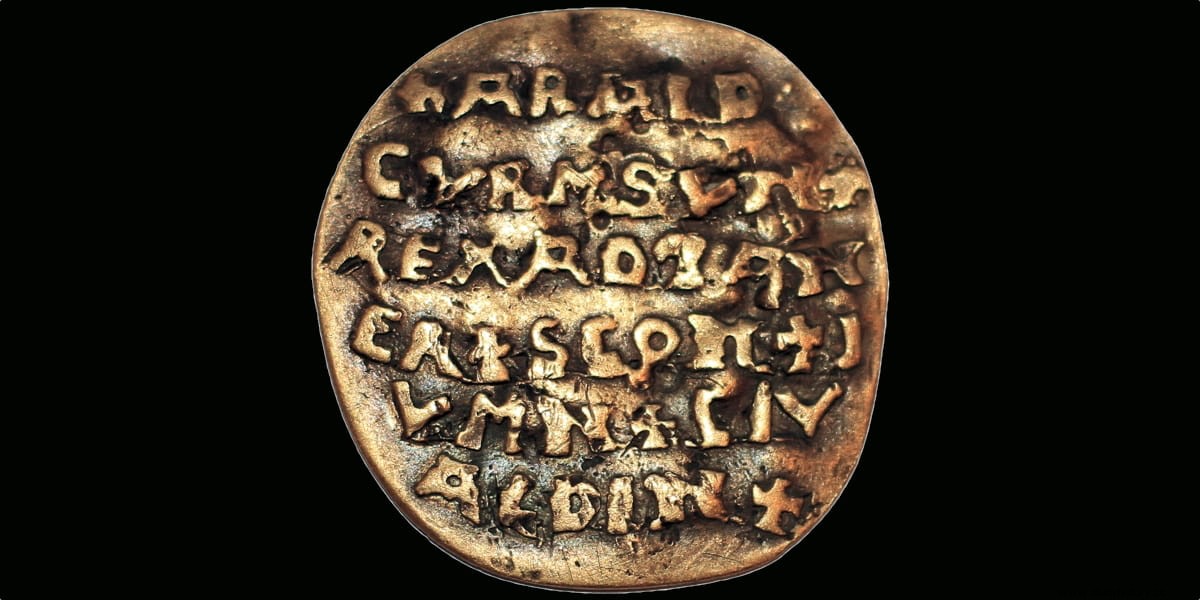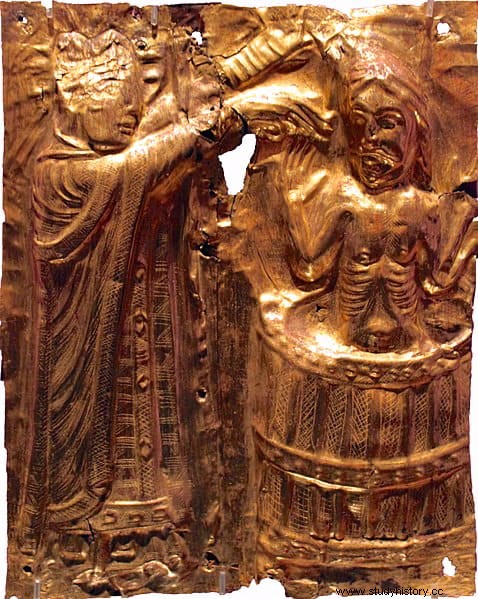In 1841 the town of Groß-Weckow (today Wiejkowo), located in the northwest of present-day Poland, demolished what remained of an old medieval chapel in ruins, to build a new one.
During the foundation works, an underground crypt was found and, within it, several and numerous objects appeared:a good number of medieval coins, some gold objects, a couple of swords and many pots of various metals.
But it was not the workers who made the discovery, but a boy named Heinrich, who discovered the entrance to the crypt by chance, while playing with other children in the place. So the priest made a Solomonic decision regarding the content, which he could dispose of as church property. He kept all the silver items and 1/3 of the gold items. Another third of these gold objects went to Heinrich, and the remaining third to the parents of the children who had been playing there at the time of the discovery.
Many of them quickly sold their share and used the money to go to America. But all of the priest's and half of Heinrich's was put back into the crypt, and the new church was built on top of it.

Two years later Heinrich also emigrated to America, possibly to avoid Prussian military service. The shepherd, after being stationed for several years in other locations, finally returned to the Groß-Weckow area.
In 1869, 28 years after the discovery of the crypt, the priest of Groß-Weckow received a letter from New York signed by Henry Boldt, a name that Heinrich had adopted in the new world. In it he informed her that he was married and had five children (according to archaeologist Sven Rosborn, who conducted a genealogical study, Henry Boldt is the great-great-grandfather of actor Ben Affleck). He was also requesting his share of the treasure buried in the crypt.
But by then the vicar was long dead and evidently never got to read the letter, which was filed unopened in the church journals. Moreover, there was no one left in the place who was aware of the existence of the crypt, whose secret was thus hidden and forgotten.
In 1945, at the end of World War II, a Polish soldier, Stefan Sielski, and his brother Michael, found the crypt and appropriated all its contents. At some point after the discovery, the family emigrated to Sweden and settled in Malmoe.
In 2014, 69 years after the second discovery of the crypt, Stefan's granddaughter, an 11-year-old girl named Maja, shows her history teacher at school a gold disc with inscriptions similar to those she had seen in her medieval history book The teacher immediately realized the importance of the object, coming from the treasure of the crypt of what was then called Wiejkowo. It turned out to be Curmsun's disk.

It is a concave disk weighing about 25 grams and with a diameter of 4.5 centimeters, bearing an inscription mentioning the semi-legendary King Harald Bluetooth (by his patronymic Curmsun (Gormsson, son of Gorm). Analysis revealed that it is formed from an alloy containing between 83 and 92 percent gold (with silver, copper and iron), possibly created in the late 10th or early 11th century. And that it was created with the lost wax technique.
The obverse bears the inscription ARALD CVRMSVN REXADTANER SCON JVMN CIVALDIN (Harald Gormsson king of the Danes, Skåne, Jomsborg, city of Oldenburg). And on the reverse a Latin cross surrounded by four points, possibly symbolizing the evangelists.

There are several theories about who could have made it and for what. Some think that it has to do with Harald's baptism in 963 by Bishop Poppo; that it was made to commemorate the king's second marriage to Tova in 970; that it could be one of the gifts given by Harald to the Emperor Otto the Great in 973 (in fact it is known that he received a gold disk or plate); others that it may be the royal seal created in 985, and finally that it was made after his death in 986 trying to quell the rebellion of his son Svend Haraldsson, perhaps by monks who would have considered him a martyr or a saint.
Moreover, according to Sven Rosborn, Harald would have been buried in the Wiejkowo church, the same whose ruins were demolished in 1841 and under which the crypt was found.
What the researchers seem to agree on is that the disk closely resembles Byzantine seals and talismans from the same era.
At the moment it seems that the disc is still stored in a bank vault, waiting for a museum or private collector to want to acquire it for the more than three million euros at which it is valued.
